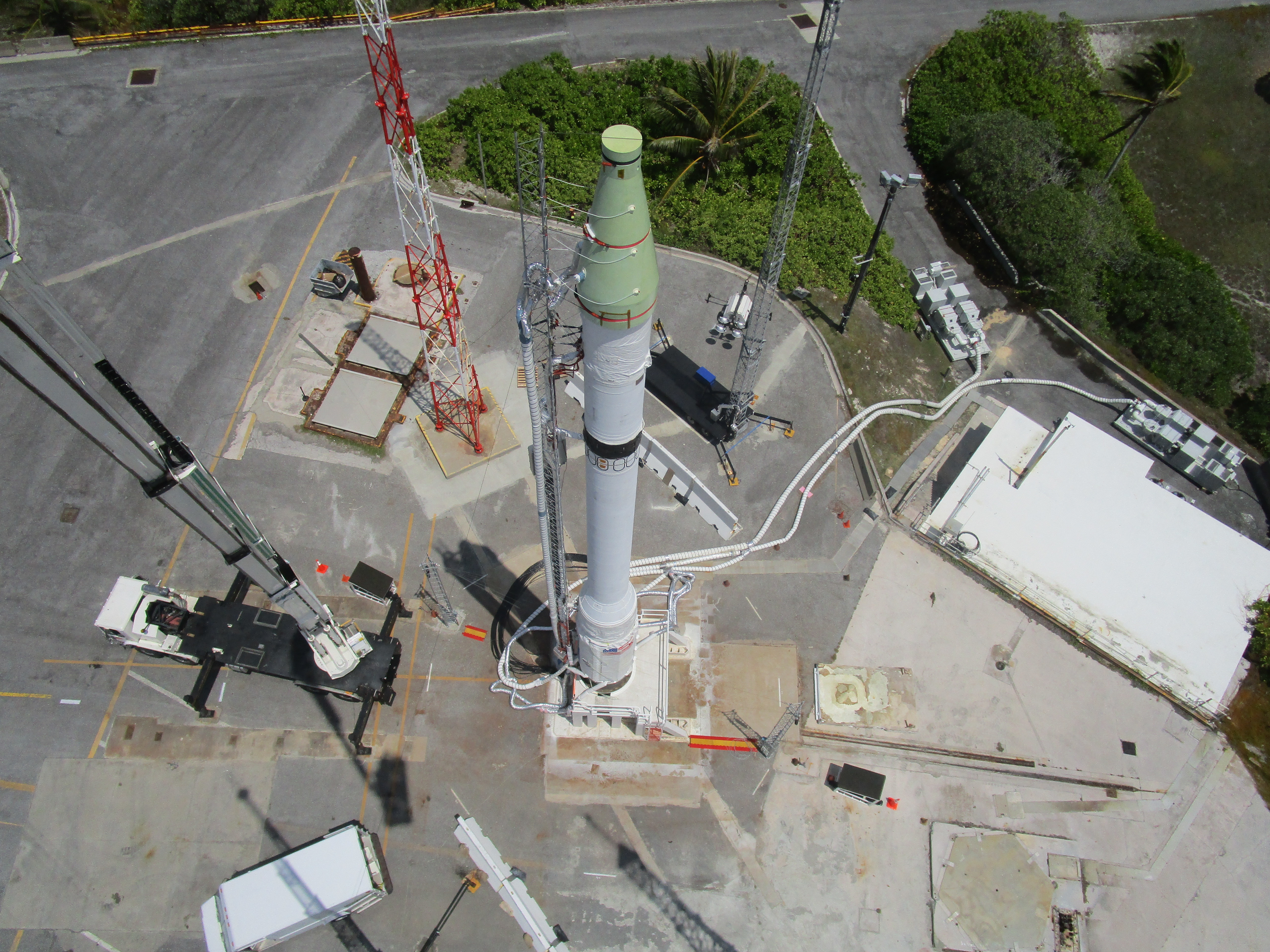
A new report from the Congressional Budget Office estimates it will cost $1.2 trillion to operate, sustain, and modernize the nuclear triad from 2017-2046. Here, the Missile Defense Agency, in cooperation with the Air Force, the Joint Functional Component Command for Integrated Missile Defense, and US Northern Command, prepare to intercepte an intercontinental ballistic missile target during a test of the Ground-based Midcourse Defense (GMD) element of the nation's ballistic missile defense system. Missile Defense Agency photo.
The cost of the military’s total nuclear arsenal will amount to $1.2 trillion in 2017 dollars over the next 30 years, a staggering amount that takes into account the Air Force’s push to modernize and recapitalize its bomber fleet, cruise missiles, and intercontinental ballistic missiles.
While the number is large, it would be even more expensive if the US operated and maintained its current equipment instead of modernizing, according to a Congressional Budget Office report released Tuesday.
The review, which focused on the Obama administration’s plans to modernize the nuclear arsenal, details a rise from 2017’s cost of $29 billion to a high of $50 billion per year in the early 2030s.
The biggest chunk of the cost is the $772 billion price tag for operation, sustainment, and modernization of delivery systems and weapons—long-range aircraft, missiles, and submarines. About $445 billion is for laboratories and production facilities, as well as command, control, communications and early-warning systems, while $25 billion would be for operation, sustainment, and modernization of tactical delivery systems—aircraft carrying weapons over shorter ranges.
House Armed Services Committee ranking member Rep. Adam Smith (D-Wash.) requested the report in March, along with House Appropriations Defense Subcommittee ranking member Rep. Pete Visclosky (D-Ind.). Smith said the minority on his committee has been blocked by the Defense Department in its search for a “realistic estimate” of the long-term costs. Congress still doesn’t have an answer for how it will pay for the $1.2 trillion, and whether that funding will come out of other requirements, he said.
“If that comes out of our conventional forces that will be very, very, very problematic for us,” Smith said in a statement. “So rather than talk about the bow wave, there is future fiscal risk that the country, Congress, and future administrations and this administration must come to grips with.”
The report looked at possible, yet unlikely, ways to reduce the force structure and cost of the arsenal, such as delaying modernization programs, moving to a dyad instead of a triad, and reducing the number of weapons and delivery systems below New START limits.
